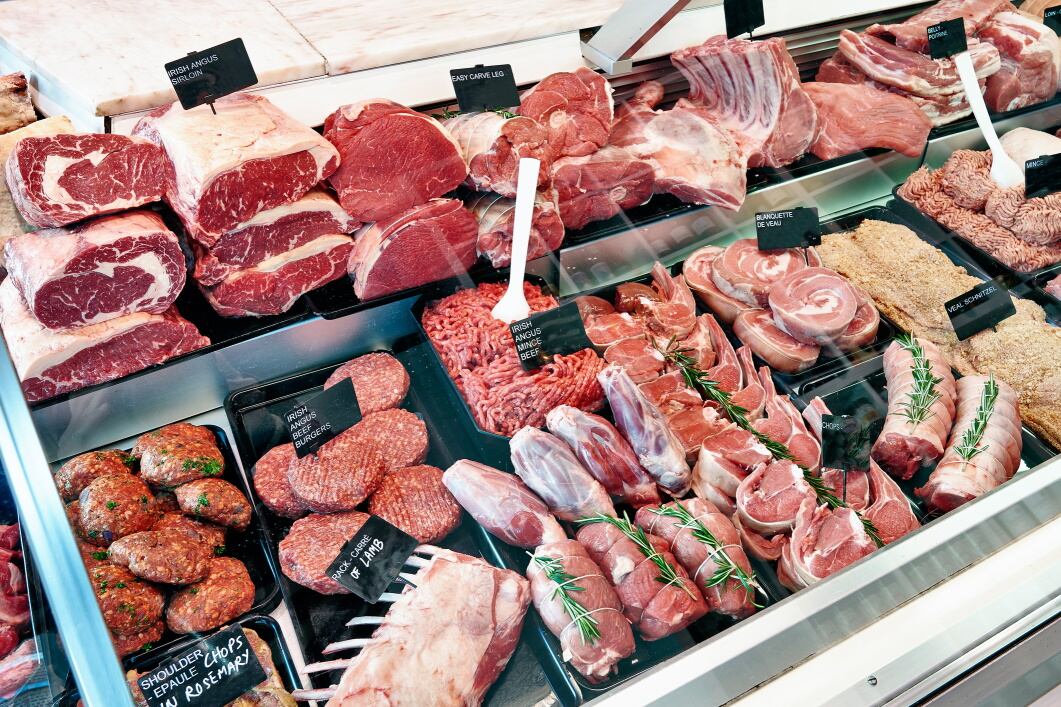In recent months, shoppers across various regions have begun raising questions about the quality and consistency of some packaged meat products found in supermarkets. Many of these concerns stemmed from observations about unusual textures, unexpected odors, or inconsistencies in appearance from one package to another. At first, customers assumed the issues were isolated—perhaps a single supplier error, a temporary storage problem, or an off batch reaching the shelves by mistake.
However, as similar complaints increased, consumer groups and food quality specialists began paying closer attention. Their concern was not driven by alarmism, but by a practical question: when customers believe they are purchasing a premium product, what guarantees exist to ensure that the product truly matches its label?
This renewed focus on labeling and transparency set the stage for a deeper review of how meat products move through distribution networks before reaching supermarket shelves.
What Investigators Found in the Supply Chain
A closer look at the distribution process revealed an issue that is not uncommon in global food markets: the substitution of higher-priced meat cuts with blends that include lower-grade or mixed-source components. Importantly, investigations showed that the issue originated with distributors, not with the supermarket chains themselves.
Distributors, acting as intermediaries between producers and retailers, were found to be mixing meat from multiple sources—sometimes including imports from countries with different regulatory frameworks—while packaging it under labels that implied uniform, premium quality. While the products were still legally allowed for sale and did not pose a documented health risk, the labeling did not fully reflect the true origin or grade of the meat inside the package.
For consumers, the primary issue was not safety but expectation and transparency. Customers believed they were paying for a particular standard of meat, and the reality did not always align with the product description.
Why Consumers Felt Misled

Consumers interviewed by food policy researchers expressed a common theme: the sense of being misled not because the product was harmful, but because the information on the packaging did not accurately represent the product they brought home. Many households rely on labels to make purchasing decisions—especially for items like meat, where quality, origin, and handling practices often influence both price and perceived value.
For shoppers who pay extra for products labeled “premium,” “locally sourced,” “grass-fed,” or “high-grade,” discovering that the product did not match these claims felt frustrating. Several consumers compared the experience to buying a branded product only to receive a generic version at full price.
This sentiment highlights a broader issue in the food industry: the gap between what labels promise and what supply chains deliver.
How Supermarkets Responded to the Findings

Supermarket chains, upon learning of the discrepancies, issued statements clarifying that they were unaware of the substitutions taking place. Large retailers often rely on third-party distributors to package or partially process meat before it reaches store shelves. When distributors do not adhere to strict transparency practices, retailers can unknowingly stock products that fall short of the quality described on the label.
In response, several chains initiated internal audits of their supply chains, temporarily suspended certain distributors, or adjusted their procurement policies to increase visibility across multiple stages of sourcing. Some introduced additional quality checks and began working directly with producers to reduce the number of intermediaries involved.
Their actions reflect an important shift: retailers increasingly recognize that customer trust relies not only on what happens inside the store but on every step of the journey that brings products to the shelf.
Why Food Label Accuracy Matters
Accurate labeling is essential for maintaining consumer confidence and ensuring fair market practices. Food labels serve multiple purposes: informing buyers about what they are purchasing, allowing price comparisons, and supporting dietary preferences or restrictions. When labels do not align with the actual product, even if the product is safe, customers lose the ability to make informed decisions.
Food fraud experts emphasize that mislabeling can occur in various forms—not only in meat but also in seafood, oils, honey, and spices. In many cases, mislabeling stems from economic motivations: substituting a lower-cost ingredient or source to maintain margins while preserving the appearance of a premium item.
While regulators regularly monitor labeling practices, global supply chains are complex. Products may pass through multiple handlers before reaching consumers, making strict oversight both essential and challenging.
What Shoppers Can Do to Stay Informed

Experts recommend several practical steps for consumers who want to make informed food choices:
Read labels closely
Understanding terms such as “product of,” “packed in,” “processed in,” or “imported from” can provide clues about the product’s supply chain.
Buy from reputable brands or transparent producers
Some brands publish detailed sourcing practices, supply chain audits, or quality guarantees.
Check for certification seals
Look for verified marks from organizations that audit food origin or production standards.
Stay updated on recalls and consumer alerts
Regulatory bodies like the USDA, FDA, and European Food Safety Authority regularly publish recalls or advisories that help consumers identify potential issues.
Support retailers with strong transparency policies
Supermarkets that commit to traceability, direct sourcing, and clearer labeling can help reduce the likelihood of misrepresentation.
These steps do not eliminate all risks, but they empower consumers to navigate the food market with greater awareness.
The Importance of Transparency Moving Forward
The recent concerns surrounding mislabelled meat highlight an ongoing conversation within the food industry: transparency needs to keep pace with global sourcing. As supply chains expand across borders, retailers and regulators must adapt by strengthening documentation, improving audits, and encouraging more direct partnerships between farmers and stores.
For consumers, the issue is not merely about price or presentation—it is about trust. Families rely on accurate information when making purchase decisions, especially for products that form a core part of their diet.
The incident serves as a reminder that while most food products reach supermarket shelves through legitimate and regulated channels, continuous vigilance is essential. Clear communication, reliable labeling, and visible sourcing practices benefit both shoppers and retailers, fostering confidence in a market where trust is central to every purchase.
Sources
-
Food and Agriculture Organization (FAO) – Food Fraud and Mislabelling Overview
-
U.S. Food and Drug Administration (FDA) – Food Labeling and Misbranding Guidance
-
U.S. Department of Agriculture (USDA) – Meat and Poultry Labeling Requirements
-
European Commission – Food Traceability and Transparency Regulations
-
European Food Safety Authority (EFSA) – Food Supply Chain Integrity
